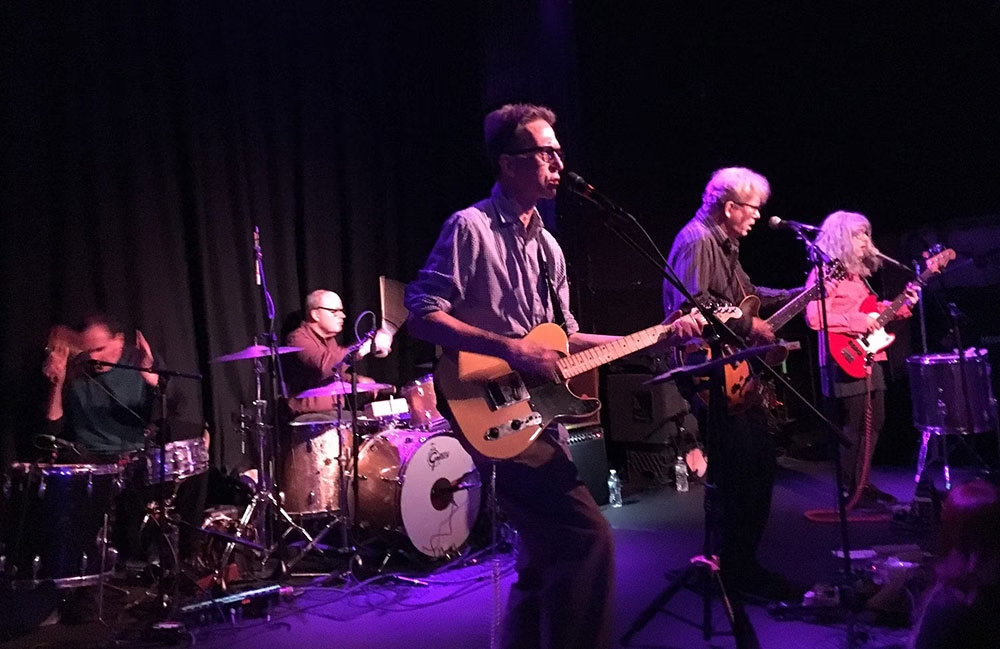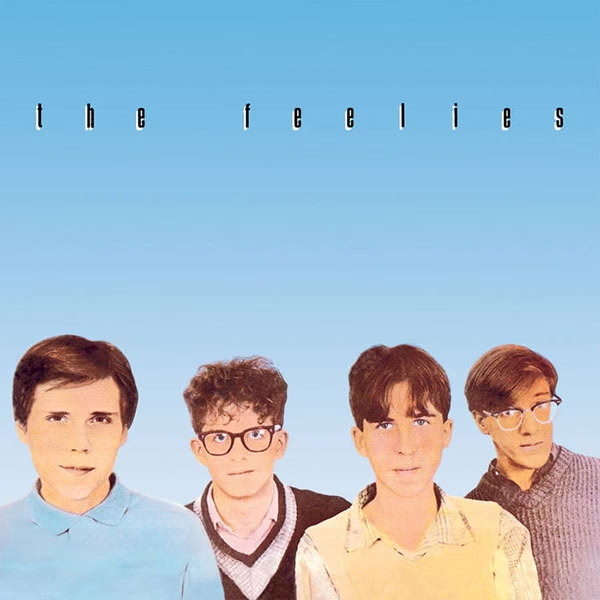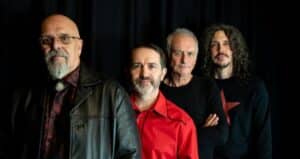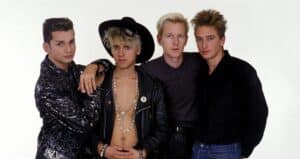The Feelies: Jangly Minimalists and Post-Punk Pioneers
The Feelies are an American rock band formed in Haledon, New Jersey, in 1976, celebrated for their hypnotic rhythms, jangly guitars, and a sound that helped shape the American indie rock underground. Often categorized within post-punk, college rock, and jangle pop, The Feelies forged a unique identity through their subtle intensity, nervous energy, and Velvet Underground-inspired minimalism.
Though never commercially massive, The Feelies earned a cult following and became hugely influential on alternative bands like R.E.M., Yo La Tengo, and Galaxie 500. Their music often feels like a gentle build-up to something that never quite explodes—but pulses with life the entire time.
The Feelies. Formation and Line-Up
- Formed: 1976, Haledon, New Jersey
- Founders:
- Glenn Mercer – Vocals, guitar, songwriting
- Bill Million – Guitar, backing vocals
Classic Line-up (1980s):
- Stan Demeski – Drums
- Dave Weckerman – Percussion
- Brenda Sauter – Bass, vocals
The Feelies formed during the CBGB-era punk explosion but stood apart with their meticulous guitar interplay, rhythmic precision, and a preference for quiet tension over loud confrontation.
The Feelies. Musical Style
The Feelies are known for their:
- Jangly, interlocking guitar work, often inspired by The Velvet Underground and Television
- Tight, metronomic rhythms that create a trance-like momentum
- Subdued vocals and minimalistic lyrics
- Songs that gradually intensify, creating tension through repetition rather than volume
- A style that bridges art rock, folk-rock, punk, and proto-indie pop
Their approach is often described as “nervous energy” turned into music—obsessively tight, emotionally restrained, but deeply alive.

The Feelies. Key Albums
Crazy Rhythms (1980)
A landmark debut and one of the most original American post-punk albums. Dry, twitchy, and rhythmically intense.
Highlights:
- “The Boy with the Perpetual Nervousness”
- “Fa Cé-La”
- “Crazy Rhythms”
- “Everybody’s Got Something to Hide (Except Me and My Monkey)” – A minimalist Beatles cover
The Good Earth (1986)
Co-produced by Peter Buck (R.E.M.), this album marked their return after a long hiatus. More organic and pastoral, but still rhythmically focused.
Highlights:
- “Slipping (Into Something)”
- “The High Road”
- “Let’s Go”
- “Tomorrow Today”
Only Life (1988)
A lusher, more melodic record with a breezy, wide-open feel. Emotional restraint gives way to more romantic textures.
Highlights:
- “Away”
- “The Undertow”
- “Too Far Gone”
Time for a Witness (1991)
A tougher, darker album with more distorted guitars and direct songwriting. Still subtle, but more muscular.
Highlights:
- “Sooner or Later”
- “Invitation”
- “Find a Way”
Here Before (2011)
After two decades of silence, this reunion album proved their sound was timeless. Gentle, jangly, and beautifully crafted.
Highlights:
- “Should Be Gone”
- “Again Today”
- “When You Know”
In Between (2017)
A meditative and mature album, embracing twilight moods and emotional clarity. It feels like a soft-spoken farewell—or continuation.
Highlights:
- “Gone Gone Gone”
- “Make It Clear”
- “In Between”
The Feelies. Live Performances
- Known for precise, reserved live shows that focus on musicianship over theatrics
- Their sets often include highly curated cover songs (e.g., The Beatles, The Stooges, Rolling Stones, Patti Smith)
- Despite their subdued stage presence, their tightness and energy create an immersive live experience
The Feelies. Influence and Legacy
- Pioneers of the jangle-pop and college rock sound
- A direct influence on bands like R.E.M., Yo La Tengo, Luna, Real Estate, and The National
- Crazy Rhythms is regularly cited as one of the best albums of the post-punk era
- Respected for their integrity, consistency, and refusal to chase trends
- Their music has been featured in films by Jonathan Demme and other indie auteurs
Where to Start
| Album | Year | Best For |
|---|---|---|
| Crazy Rhythms | 1980 | Essential, edgy, and foundational |
| The Good Earth | 1986 | Earthy, melodic, and emotionally warm |
| Only Life | 1988 | Dreamy and accessible |
| Time for a Witness | 1991 | Heavier and more direct |
| Here Before | 2011 | A graceful, understated return |
Final Thoughts
The Feelies never shouted to be heard—they let precision, atmosphere, and nuance do the talking. Their music is as much about what isn’t played as what is, with a sound that feels personal, hypnotic, and quietly intense.
For listeners who appreciate craft over flash, subtlety over spectacle, and emotion that simmers rather than explodes, The Feelies remain one of indie rock’s quietest, most enduring treasures.





